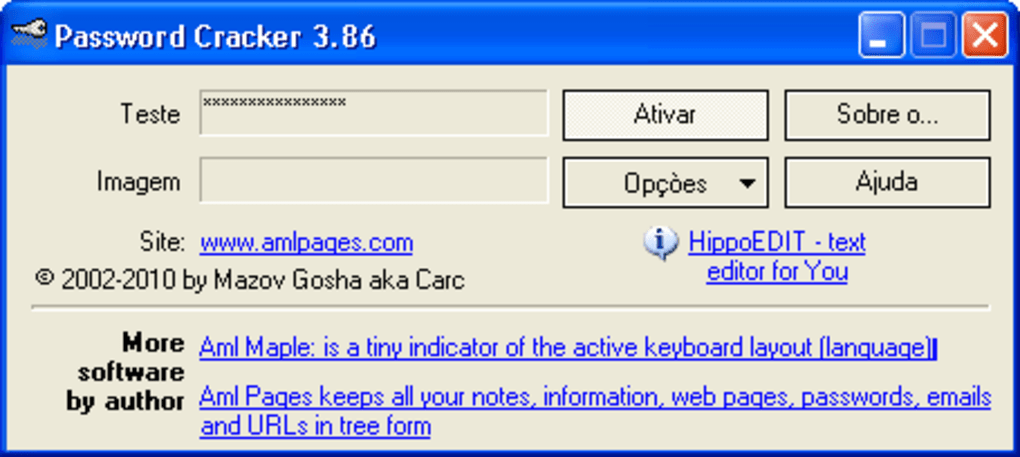The LM hash is the old style hash used in Microsoft OS before NT 3.1. Then, NTLM was introduced and supports password length greater than 14. On Vista, 7, 8 and 10 LM hash is supported for backward compatibility but is disabled by default. The goal is too extract LM and/or NTLM hashes from the system, either live or dead. Likewise, the following values are used for encryption of the old LM hash with the new NT hash. Split the LM hash of the old password into two blocks (2.2.11.1.1). Block 1: c9 b8 1d 93 9d 6f d8 0c Block 2: d4 08 e6 b1 05 74 18 64. When a match is found between the newly generated hash and the hash in the original database, the password has been cracked. It’s that simple. Other password-cracking programs simply attempt to log on using a predefined set of user IDs and passwords. This is how many dictionary-based cracking tools work, such as Brutus and SQLPing3. Dec 08, 2016 Understanding Password Hashes. There are two password hashes: LM Hashes and NT hashes. LM hashes are very old and so weak even Microsoft has finally stopped using them by default in all Windows versions after Windows XP. NT hashes are Microsoft's 'more secure' hash, used by Windows NT in 1993 and never updated in any way.
In this tutorial we will show you how to create a list of MD5 password hashes and crack them using hashcat.
We will perform a dictionary attack using the rockyou wordlist on a Kali Linux box.
Creating a list of MD5 hashes to crack
To create a list of MD5 hashes, we can use of md5sum command.
The full command we want to use is:
Here we are piping a password to md5sum so a hash is produced. Unnecessary output is then stripped and it is stored in a file in a file called 'hashes'.
Nt Hash Decrypter
'echo -n 'Password1' is used to print the phrase 'Password1'. The -n portion removes the new line added to the end of 'Password1'. This is important as we don't want the new line characters to be hashed with our password.
The part “tr –d ‘ -‘ “ removes any characters that are a space or hyphen from the output like so:
Before:
After:
For demonstration purposes, we'll create multiple MD5 hashes containing different strength passwords and output them to a file called hashes:
Once you have run these commands will look something like this:
If you already have a list of words then the following bash script can be used to automate the MD5 generation, reading each line in a file, then generating a file off the resulting hashes. Replace 'wordlist' with the file path of your word list.

If you do not have md5sum on your machine, you can copy and paste the hashes above and save it in a file called 'hashes'. If you want to hash different passwords than the ones above and you don't have md5sum installed, you can use MD5 generators online such as this one by Sunny Walker.
Crack Ntlm Hash
Running hashcat to Crack MD5 Hashes
Now we can start using hashcat with the rockyou wordlist to crack the MD5 hashes. The rockyou wordlist comes pre-installed with Kali. If you are not using Kali you can use another wordlist, or download it from here.
The command to start our dictionary attack on the hashes is:
| Argument | Function |
| -m 0 | Tells hashcat which mode to use. 0 is MD5. |
| Hashes | Our file containing the our MD5 password hashes. |
| /usr/share/wordlists/rockyou.txt | Points hashcat to the wordlist containing the passwords to hash and compare. |

When you run the command, you should get an output like below:
Towards the top of the output you can see the hashes that were cracked side-by-side with the plaintext password and hash.
From the output we can determine the following passwords we hashed were not in the rockyou wordlist:
- GuessMe3
- S3CuReP455Word
- HighlyUnlik3lyToB3Cr4ck3d
Crack Lm Hashes
Unless told otherwise, any hash that hashcat cracks will be stored in a hashcat.pot file. This will be created in directory where you ran hashcat.
The contents of your 'hashcat.pot' file from this tutorial should look like the following:
Summary
This has been a basic tutorial on how to crack MD5 hashes using hashcat. We've MD5 hashed passwords and using hashcat, cracked five out of the total eight. The attack technique that we used within hashcat was a dictionary attack with the rockyou wordlist.